The rupestral sanctuaries of Cappadocia constitute an unique artistic achievement in a region of superlative natural features, providing irreplaceable testimony to post-iconoclast Byzantium. The dwellings, village convents and churches retain the fossilized images of a province of the Byzantine Empire between the 4th century and the Turkish invasion.
The eroded plateau of the Göreme valley is a spectacular example of the effects of differential erosion of the volcanic tuff sediments by wind and water. Typical features are pillars, columns, towers, obelisks and needles that reach heights of 40 m. The major remnant of erosion, Akdağ (1,325 m), is the dominant feature in the valley. The nearby Erciyas volcano is still active with occasional minor eruptions. Its outstanding example represents the Earth’s evolutionary history. Within these rock formations people have excavated a network of caves which served as refuges, residences, storage and places of worship dating from the 4th century. The surrounding landscape is agricultural with a number of small scattered rural villages.
The historical setting, the rock-hewn churches and the unusual eroded landforms combine to produce a mixed cultural/natural landscape of unusual appearance. Architectural styles are based on the local stone and the valley has changed little over the centuries.
Although the area has been extensively used and modified by man for centuries the resulting landscape is one of harmony and consideration of the intrinsic values of the natural landforms. There has been some earthquake damage to some of the cones and pillars but this is seen as a naturally occurring phenomenon. In the ruin like landscape of the Cappadocia plateau where natural erosion has sculpted the tuff into shapes which are eerily reminiscent of towers, spires, domes and pyramids, man has added to the workmanship of the elements by digging cells, churches and veritable subterranean cities which together make up one of the world’s largest cave dwelling complexes. Although interesting from a geological and ethnological point of view, this phenomenal rupestral site excels especially for the incomparable beauty of the decor of the Christian sanctuaries whose features make Cappadocia one of the leading examples of post-iconoclast Byzantine art.
It is believed that the first signs of monastic activity in Cappadocia date back to the 4th century at which time, acting on the instructions of Basil the Great, Bishop of Caesarea (Kayseri), small anchoritic communities began inhabiting cells dug into the rock. Later on, in order to resist Arab forays they began banding together into troglodyte villages or subterranean towns such as Kaymaklı or Derinkuyu which served as places of refuge.
Cappadocian monasticism was already well established in the iconoclast period (725-842), as illustrated by the many sanctuaries, the decoration of which was held to the strict minimum of symbols (most often sculpted or tempera painted crosses). After 842, however, many rupestral churches were dug in Cappadocia.
Churches of Göreme, Cappadocia-Turkey
- Church of the Buckle (Tokalı Kilise)
- Apple Church (Elmalı Kilise)
- Church of Saint Barbara (Azize Barbara Kilisesi)
- The Snake Church (Yılanlı Kilise)
- Dark Church (Karanlık Kilise)
- Church with Sandals (Çarıklı Kilise)
- St. Catherine Chapel
- Durmus Kadir Church
- Yusuf Koc Church
- El-Nazar Church
- Virgin Mary Church
- Swords Church
- Nunnery and Monastery
- Chapel of St. Basil
- Hidden Church
There are over 10 cave churches in the Goreme Open Air Museum. Along with rectories, dwellings, and a religious school, they form a large monastic complex carved out of a roughly ring-shaped rock formation in the otherworldy landscape of Cappadocia. Entrance to the site is on the north side.
Most of the churches are fully painted inside with beautiful and historically important Byzantine murals dating from 900-1200 AD. Most are in remarkably good condition, although nearly all the eyes of the painted figures have been gouged out by superstitious locals afraid of the Evil Eye. One notable exception is the Dark Church, whose walls were long protected by pigeon droppings!
One of the recurring themes in these and other Cappadocia Churches is St. George slaying the dragon. According to local tradition, the event occurred on the summit of Mount Erciyes.
St. Basil’s Church has a rectangular nave with niches and three apses, separated from a narthex by arches. The narthex has tombs in the floor, which are open but covered with metal grating. Fresco subjects in this church include Christ, St. George, St. Basil and St. Theodore. The three Maltese crosses on the vault of the nave are believed to represent the Holy Trinity.
The frescoes of the Apple Church mostly date from the 11th century. The interesting name probably derives from a red orb held by St. Michael the Archangel in a fresco near the entrance, but an alternative theory is that an apple tree used to grow next to it. The frescoes depict saints and bishops, with a Last Supper including a large fish to the right of the altar.
This cruciform chapel with three apses is mostly decorated with simple figures and symbols in red paint on white plaster, making a sharp contrast with the colorful figures of most Göreme frescoes. They may have been painted shortly after the 8th-century iconoclastic controversy.
A giant locust symbolizing evil on one wall opposes two crosses on the other, while a rooster representing the devil is battled with bricks representing the Church. Other strange creatures and shapes are more difficult to interpret. The figurative frescoes include Christ Pantocrator, St. George and the Dragon, St Theodore, and St Barbara.
The Snake Church has a long nave with a low, barrel-vaulted ceiling. Among the frescoes are portraits of St. Theodore, St. George slaying the dragon again (it looks like a snake, for which the chapel is named), Emperor Constantine and his mother St. Helena, and St. Onuphrius. The last saint was an Egyptian hermit who lived near Thebes. In medieval art, including in this example, he is usually depicted with a long gray beard, wearing nothing but a fig leaf.
The Dark Church, so named for the little light that penetrates the interior, was used as a pigeon house until the 1950s. It took 14 years to scrape pigeon poo off the walls, but underneath were beautifully preserved 11th-century frescoes. Recently restored, the paintings of New Testament scenes and other subjects are considered the best-preserved frescoes in Cappadocia.
Built by a donor named Anna, the Chapel of St. Catherine dates from the 11th century. It has a Greek-cross-shaped nave, with a dome over the center and barrel-vaulted cross arms. The narthex has nine floor tombs and two burial niches. The frescoes depict: a Deesis (in the apse); Doctors of the Church: Gregory, Basil the Great and John Chrysostom; St. George, St. Theodore, and St. Catherine.
This church is named for two footprints just inside the entrance, around which many legends have been woven. Suggestively, a fresco of the Ascension can be seen directly of above. The narthex of the church has collapsed; the nave has a cross plan with barrel vaults and 11th-century frescoes.
The fresco subjects are New Testament scenes such as the Nativity, Adoration of the Magi, and the Baptism of Christ. The main cupola has a Christ Pantocrator with the Four Evangelists below; the other three cupolas are occupied by the angels Michael, Gabriel and Uriel.
In the apse is a Deesis (Christ with Mary and John the Baptist), with an inscription next to Christ reading “I am the light of the world, who follows me will not be left in the dark.” Around the altar are saints: Blaise, Gregory of Nazianzus, Basil, Chrysostom and Hypatius.
The last sight within the museum complex near the exit is a remarkable rock-carved convent with six stories of tunnels, corridors, stairways and chambers. It housed as many as 300 nuns at any one time.
Just outside the museum exit on the right is the Buckle Church, the largest of the cave churches at Göreme. It can be entered with the same ticket as the main complex and should not be missed. The frescoes are also the finest in Göreme, with the richest colors and the most detail. It dates from the 10th and 11th centuries and was restored in the 1960s.
The Buckle Church is comprised of four chambers, which are known as the Old Church, New Church, Paracclesion and Lower Church. The Old Church (10th century) has a single nave with a barrel vault. The frescoes give a comprehensive account of the life of Christ, from the Annunciation through the Baptism and Miracles and ending with the Passion, Resurrection and Ascension. The Transfiguration is painted over the entrance and the vault has portraits of saints.
The Old Church now acts as a narthex for the New Church, which was added to the former’s east side around 990-1010 AD. Its barrel-vaulted nave tells the story of Christ in deep red and blue hues. The transverse nave has frescoes of saints, scenes from the life of St. Basil, and the miracles of Christ.
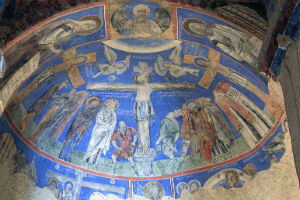
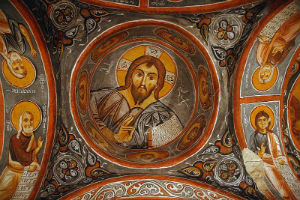
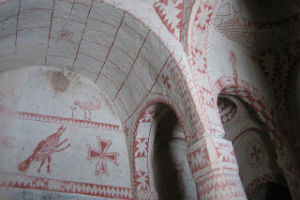
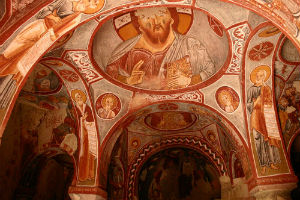
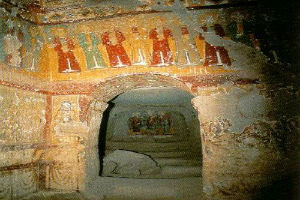
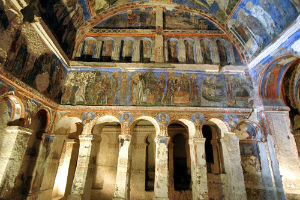
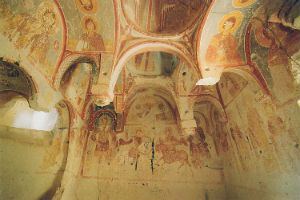
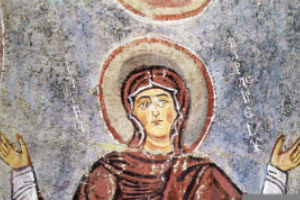
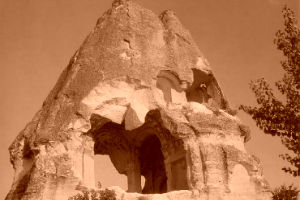
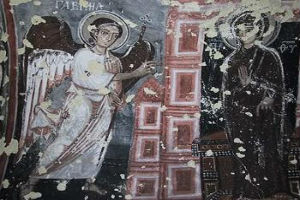
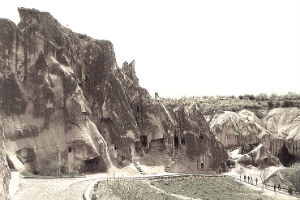
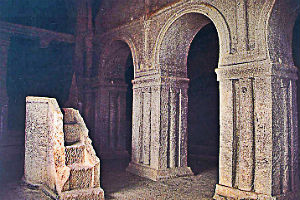
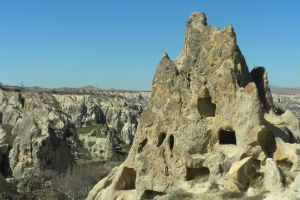
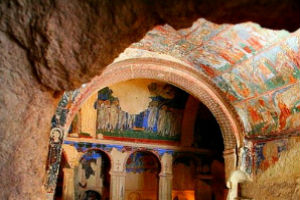
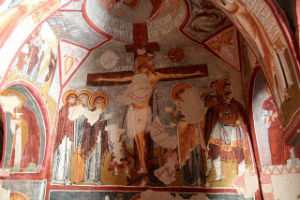


I didn't LOVE Goreme Open-Air Museum but I did find it very interesting. The history behind the area is most fascinating and seeing the ancient writing and drawings on the walls was also pretty cool but I didn't fall in love with the views like I did in other places in Cappadocia!
You wont believe your eyes when you see the amazing work of art and the best preserved churches in that cave community. Goreme is one of my all time favorite art museum. Its amazing to imagine the way people lived in the caves for so many centuries.
Church inside caves are interesting, nice view.
Convenience to go comparing with other church in Goreme
You can wander aimlessly without being bothered by any others
Spectacular views, unbelievable what nature have done there! Take your camara and enjoy the fantastic shapes.
Within 20 minutes walk of Goreme, this fascinating open-air museum is a former religious community dating back centuries.
probably the most unique museum in the world – visiting caves and seeing 10th century frescoes inside is a special experience – don't miss the Dark Church – worth the extra fee!
Even though we visited early in the 'season' this attraction was crowded. We used an audio tour which was helpful, however, some of the sites described were closed off, and this was not apparent prior to commencing. Like many sites in Turkey, the sign posting and descriptions of how to find/see things is inadequate. It is also annoying that one…
We spend few days at goreme !!!!!!! the village is so nice,and you an find very nice restaurants .
we tried this one at the main road ,were they brake the pot and they serve your meal !!!!!
very interesting and unusual !!!!
But the amazing was the balloons in the morning !!!!DONT MISSED IT the morning light is something…
While staying at the wonderful Dervish Cave Hotel, we spent our 1st day in the Goreme Open Air Museum hiking up and down all the steps to the ancient cave dwellings and churches with painted walls. The next day I went on a hot air balloon ride with Air Kapadokya. Our hotel manager Cemal was our balloon pilot for our…